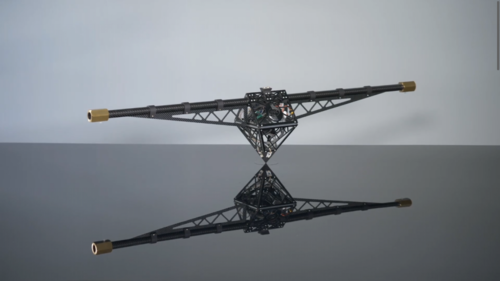2024
Kladny, K., Kügelgen, J. V., Schölkopf, B., Muehlebach, M.
Deep Backtracking Counterfactuals for Causally Compliant Explanations
Transactions on Machine Learning Research, July 2024 (article)
Zughaibi, J., Nelson, B. J., Muehlebach, M.
Balancing a 3D Inverted Pendulum using Remote Magnetic Manipulation
Robotics and Automation Letters, 2024 (article) In revision
Florian Dörfler, Zhiyu He, Giuseppe Belgioioso, Saverio Bolognani, John Lygeros, Michael Muehlebach
Towards a systems theory of algorithms
IEEE Control System Letters, 2024 (article)
Ma, H., Zeilinger, M., Muehlebach, M.
Stochastic Online Optimization for Cyber-Physical and Robotic Systems
Machine Learning, 2024 (article) Submitted
He, Z., Bolognani, S., Muehlebach, M., Dörfler, F.
Gray-box nonlinear feedback optimization
IEEE Transactions on Automatic Control, 2024 (article) Submitted
Muehlebach, M., Jordan, M. I.
Accelerated First-Order Optimization under Nonlinear Constraints
Mathematical Programming, 2024 (article) Submitted
Zhang, L., He, N., Muehlebach, M.
Primal Methods for Variational Inequality Problems with Functional Constraints
Mathematical Programming, 2024 (article) Submitted
2023
Ma, H., Büchler, D., Schölkopf, B., Muehlebach, M.
Reinforcement learning with model-based feedforward inputs for robotic table tennis
Autonomous Robots, 47, 2023 (article)
Hofer, M., Muehlebach, M., D’Andrea, R.
The One-Wheel Cubli: A 3D inverted pendulum that can balance with a single reaction wheel
Mechatronics, 91, 2023 (article)
2022
Muehlebach, M., Jordan, M. I.
On Constraints in First-Order Optimization: A View from Non-Smooth Dynamical Systems
Journal of Machine Learning Research, 23, 2022 (article)
2018
Muehlebach, M., Trimpe, S.
Distributed Event-Based State Estimation for Networked Systems: An LMI Approach
IEEE Transactions on Automatic Control, 63(1):269-276, January 2018 (article)


